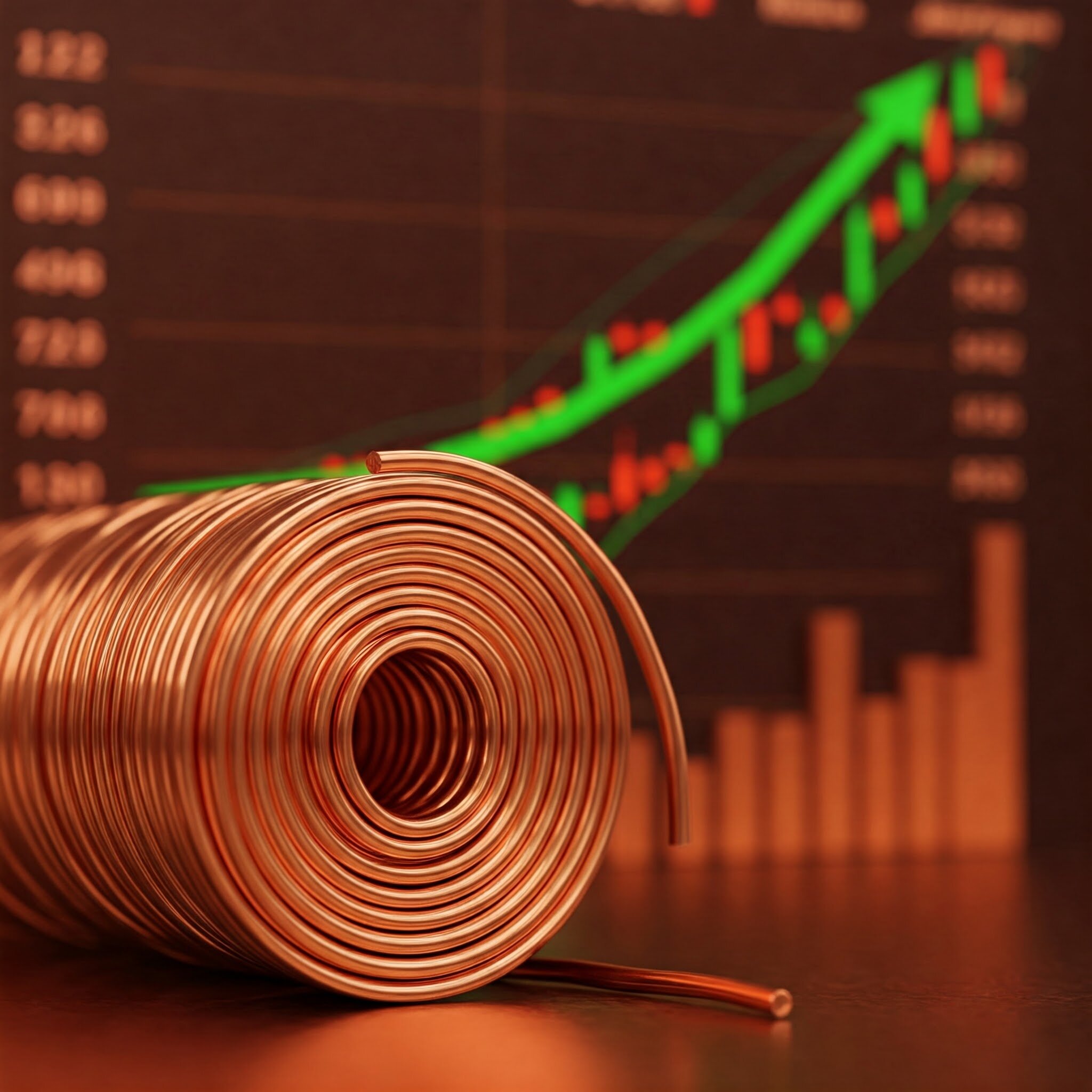
Signs of a deepening copper supply crunch outside the United States, especially in China, spurred a rapid recovery in prices this week, erasing losses from the prior week.
Beyond the noteworthy surge in copper stockpiles observed on the COMEX, supplementary information released by the data provider Markit on the preceding Friday also indicated robust demand originating from the US.
This confluence of factors, a substantial increase in available copper alongside evidence of strong consumption within a major economy, presents a potentially complex scenario for market analysts.
At the time of writing, the three-month copper contract on the London Metal Exchange was at $9,538 per ton, up 1.5% from the previous close.
The rising inventory levels on the COMEX could typically suggest a cooling of demand or an oversupply situation, potentially leading to downward pressure on copper prices.
US copper demand
However, the parallel report from Markit highlighting strong US demand introduces a countervailing force, suggesting that underlying consumption remains healthy and could potentially absorb the increased supply, mitigating significant price declines.
US copper imports reached their highest point since data collection started in 2014, as indicated by April’s figures.
“If this is confirmed by the official figures from the statistics office, speculation regarding a shortage of supply outside the US is likely to receive a further boost and drive up the copper price,” Thu Lan Nguyen, head of commodity and FX research at Commerzbank AG, said in a report.
However, as we have already emphasised several times, this is a temporary effect.
US demand is projected to decrease from its current high.
This is anticipated due to two factors: first, a natural correction following the present surge, and second, a potential long-term stabilisation at a reduced level because of a less robust economy, according to Nguyen.
The impact of US tariff policy is expected to curb economic growth beyond America as well, she added.
Russian aluminium under pressure
The imposition of Western sanctions is demonstrably affecting the Russian aluminium industry.
These restrictive measures, likely targeting key entities, financial transactions, or technological access, are creating headwinds for Russian aluminium producers.
Russia’s leading producer reports a 10% decrease in its output. The decline started towards the end of the previous year.
Meanwhile, elevated alumina prices also contributed to the decrease.
According to the United States Geological Survey, Russia still held a market share of slightly more than 5% of global aluminum production last year.
This placed them just behind India, which was the world’s second-largest producer with an approximate 6% market share.
Despite prevailing circumstances, Russia managed a marginal increase in its production last year, Nguyen said.
However, with the EU following the US and UK in imposing stricter sanctions on Russia’s aluminum sector, Russian producers will probably face growing challenges in securing new buyers for their aluminum products.
China stepped up purchases from Russia
China has recently been a major buyer of Russian aluminum, helping to stabilise the market despite sanctions and supply chain issues.
However, the expected economic slowdown due to trade tensions with the US creates doubt about how long China will continue to buy at the same level.
This potential decrease in Chinese demand, combined with other factors, makes the future for Russian aluminum exports uncertain.
The potential for reduced industrial output and infrastructure investment in China, key sectors driving aluminium consumption, suggests a likely weakening of demand for Russian aluminium in this previously reliable market.
“It can therefore be assumed that Russian production will decline more permanently,” Nguyen said.
As soon as the global economy recovers, this could lead to a tightening on the aluminium market.
The post Copper prices surge on supply constraints and robust US demand appeared first on Invezz

